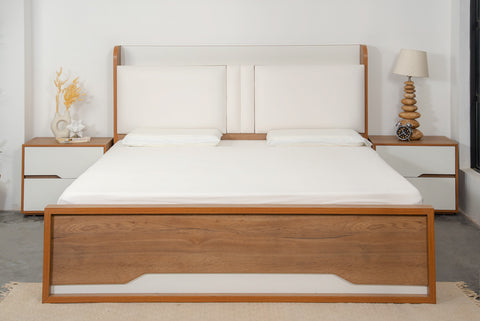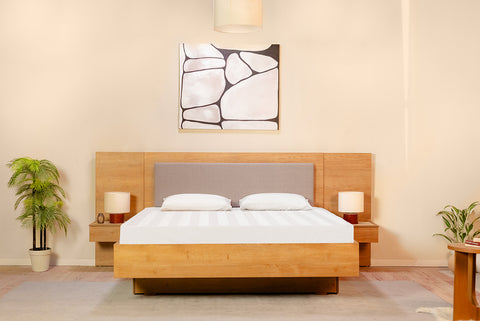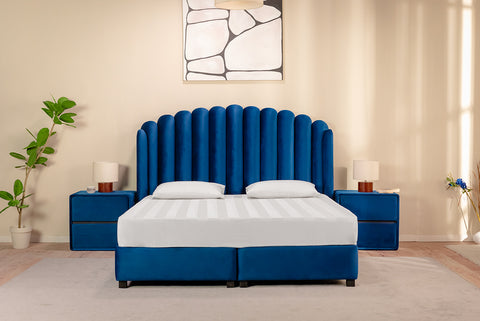Choosing Between Classic and Modern Furniture: A Simple Guide for a Well-Balanced Home
Making decisions about furniture style can feel overwhelming, especially when you want your home to look refined and intentional. One common dilemma is choosing between classic and modern furniture styles. Each brings its own character, and your choice will shape the look and feel of your home for years. The good news is that, with some thoughtful reflection, you can make a confident choice. This article offers a clear guide to help you decide which style fits your space, lifestyle, and personal taste.
Understand What Classic and Modern Furniture Represent
Classic furniture often evokes timeless design. It uses rich woods, detailed craftsmanship, curves, and textures. The style refers back to historic designs and formal silhouettes.
In contrast, modern furniture emphasizes minimalism. It features clean lines, simple forms, and function-driven layouts. Materials such as metal, glass, and light wood often appear.
Understanding these core definitions allows you to see which direction your home might lean naturally. If you enjoy formality, richness, and heritage, classic may feel right. If you prefer openness, lightness, and streamlined use, modern may suit you better.
Look at Your Home and Identify Its Natural Direction
Your existing space can guide you toward one style or the other. Start by assessing elements like architecture, flooring, natural light, and layout. If your home has detailed moulding, high ceilings, or wood panelling, then classic furniture may align well. If your space has open layouts, large windows, and simple finishes, modern furniture may feel more natural.
Consider the scale and flow of your rooms. A small room filled with heavy, richly detailed pieces may feel cramped. On the other hand, an oversized modern sofa in a large room with classic architecture may feel disconnected. Match the room's inherent character with furniture that supports it. Use this as a frame for your decision.
Think About How You Use Your Space Every Day
Furniture should work for your lifestyle, not just look good in a photo. Ask yourself how you use each room. Do you host formal gatherings? Do you work from home? Do you move frequently?
If you value tradition, quiet elegance, and less frequent furniture change, a classic style offers refuge and continuity. If you entertain informally, favour flexible layout, or update interiors often, modern furniture offers better adaptability. Function and design must go hand-in-hand. Choose the style that matches your daily rhythm.
Focus on Materials and Design Details
An effective way to tell classic from modern furniture lies in the materials and design details. Classic furniture uses dark or medium wood tones, plush fabrics, ornate detailing, and curves.
Modern furniture uses lighter or neutral tones, smooth surfaces, straight lines, and fewer decorative elements. It often emphasises materials like glass, metal or natural woods in simpler forms.
When you look at a piece, ask: Is it visually heavy or visually light? Are the lines crisp and clean or soft and embellished? The answers will help you identify its style and decide if it aligns with your vision.
Decide if You Prefer Timeless Warmth or Clean Simplicity
Choosing between the two styles often comes down to mood and emotion. A classic room tends to feel warm, grounded, and somewhat formal. It gives a sense of history and permanence. A modern room feels airy, open, and uncluttered. It gives a sense of ease and fresh possibilities.
Which feeling do you prefer waking up to? Which space makes you feel most at ease at the end of the day? There is no right or wrong answer. Focus instead on which emotion you want your home to evoke. If you lean toward one feeling more than the other, it will guide your style choice clearly.
Explore a Balanced Approach if You Like Both
What if you appreciate elements of both classic and modern furniture? You are not alone. Many homes succeed beautifully when they blend the two styles in a well-considered way.
A balanced approach might involve choosing core furniture in one style and adding pieces from the other as accents. For example, a classic solid wood dresser paired with a modern upholstered bed frame. Alternatively, use modern furniture for large pieces and bring in classic elements through lighting or accessories. The key is harmony, not clash. When you balance materials, scale, and colour, mixing becomes a strength rather than a mismatch.
Start With Key Pieces Before Expanding
When furnishing your home, start with a few essential pieces and build from there. Choose a bed, sofa, dresser or dining table rather than rushing to fill every corner. This method allows you to evaluate how the style works in your space and with your routine.
Invest in one or two pieces that anchor each room. Once those feel right, add secondary items. This method prevents you from spending on furniture that does not match your settled style. A thoughtful layer-by-layer approach helps ensure your home remains balanced and truly reflects your taste.
Conclusion
Choosing between classic and modern furniture comes down to three things: the space you have, how you live in it, and how you feel in it. When you align those with style, you make a choice that lasts. Whether you prefer the rich character of classic furniture or the calm clarity of modern pieces, the decision should reflect your home and your habits.
Rather than rushing, take time. Let one or two well-chosen pieces guide your direction. With that approach, your home will look intentional and feel balanced. At MoltyHome, each piece is crafted to support both function and design, helping you build a home with purpose and elegance.
FAQs
1. How do I know if classic or modern furniture suits my home?
Look at your architecture, layout, lighting, and how you use each space. If your home feels formal and detailed, classic may fit. If it has clean finishes and open flow, modern may suit better.
2. Can I mix classic and modern furniture in one room?
Yes. Mixing can work when done thoughtfully. Use one style as the base and add accents from the other. Balance materials, scale, and colour to achieve harmony.
3. Which style lasts longer, classic or modern?
Both can last when built well. Classic emphasizes timeless forms and rich materials. Modern emphasizes function and minimalist design. The key is quality rather than style.
4. What are the main differences between modern and classic furniture?
Modern furniture features clean lines, minimal ornamentation, and lighter materials. Classic furniture uses richer finishes, curves, and detailed building.
5. How do I start choosing furniture when decorating my home?
Begin with one major piece per room: a bed in the bedroom, a sofa in the living room. Choose the style you feel drawn to. Then build your collection gradually with secondary items that complement your core pieces.







